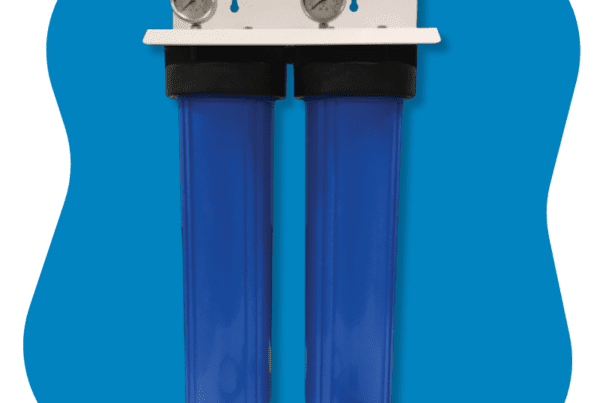Should You Winterize Your Water Softener?

It Depends
Central Indiana averages about 26 inches of snow every year, and when you add on freezing temperatures, wind chills, and ice storms, the Indiana winter can be brutal and formidable. Thankfully, most of us are used to this time of year. We bundle up with boots, coats, and hats, we start our cars in the morning to warm them up, and we insulate our doors and windows.
Many homeowners take precautions to ensure they are protected from cold drafts and freezing pipes but have you ever considered winterizing your water softener and other treatment equipment? Winterizing your water softener depends on several different factors that we will discuss.
Water Softener Equipment Location
The location of your water softener makes all the difference for winterization. If you have treatment equipment in an unheated garage or basement, you need to take some precautions. Insulating your pipes and tanks should be enough to protect your system during the winter. You can purchase pipe insulation wrap at any home improvement store.
Heat tape or electric pipe heating cables for the water lines are also a good idea. You can also purchase special water softener “jackets” to help with insulation. Some homeowners even build a box around their equipment to keep it from freezing. If your water softening equipment is inside your home, you shouldn’t need to do much, other than keep an eye on the pipes that supply the water to your softener.
Water Softener Intended Usage
If you won’t be occupying your home for an extended period of time during the winter months, it is recommended that you unplug the softener and drain the tanks. This ensures there won’t be any water left in the system that could freeze and cause damage. Even when you don’t use your water softener, your unit will continue to draw power while it awaits your return. If the pipes freeze while you are gone, the backflow could backwash into the water heater and water softener, resulting in flooding and electrical damage.
First, you’ll need to put the softener into its regeneration cycle and wait until you notice the system backwashing water into the drain. At this point, if your water softener has a manual bypass valve, it should be put into the bypass position to turn off the supply of water to the water softener. This will isolate and protect your system from the rest of the building’s supply of water during this time.
Remove the unit from the bypass valve and proceed to remove the valve from the tank. Once the riser tube is exposed, use plastic 3/8” – 1/2” plastic tubing long enough to reach the bottom of the riser tube and lower distributor. Siphoning the water from the media tank is recommended at this point. The slower process of siphoning will ensure that all the water is removed from the tank.
After the water has stopped flowing from the siphon tubing, allow the tank to sit for 5 to 10 minutes. This additional time allows for all the water to completely settle to the bottom of the media tank. At that time you can attempt to siphon the balance of water that has settled out. The majority of standing water should be scooped out of the brine tank, but the solution that’s left should not freeze because of the high salt content. Finally, unplug your water softener and, if possible, store it in a heated area.
Water Softeners & Unusually Low Temperatures
As mentioned above, Hoosiers are adapted to dealing with harsh winters. December is severely cold in Indiana with the average high temperatures in the cold 34° to 48° range and the average low temperatures in the freezing 20° to 30° range.
However, sometimes the temperatures drop dangerously low overnight, or even for a few days at a time. During these especially frigid temps, you’ll need to monitor your pipes and equipment even more closely.
Standing water freezes at 32 degrees Fahrenheit, but winter nights in Indiana can drop far below that. If you have standing water in your pipes, the cold weather may cause the water to freeze. As water freezes, it expands, putting pressure on your plumbing until it bursts.
Flowing water, however, has added kinetic energy, so it requires even colder temperatures before the molecules are slow enough to form solid bonds. As a result, if you have water flowing through your pipes, they’ll be less likely to freeze and burst during the winter. Before you go to bed each night, set your tap to a slow drip. If you want to conserve water, place a bucket in the bottom of the sink to catch the drip and use the water the next day. This slow drip is usually enough to keep water flowing through your treatment equipment and prevent it from freezing.
Still Have Questions? Contact Us Today
If you are still unsure about how to winterize your water softener or other treatment equipment, you should contact the professionals at C and J Water. We have many certified specialists that can answer your questions about your specific equipment. Whatever your need is, you can trust our team—contact us today!





